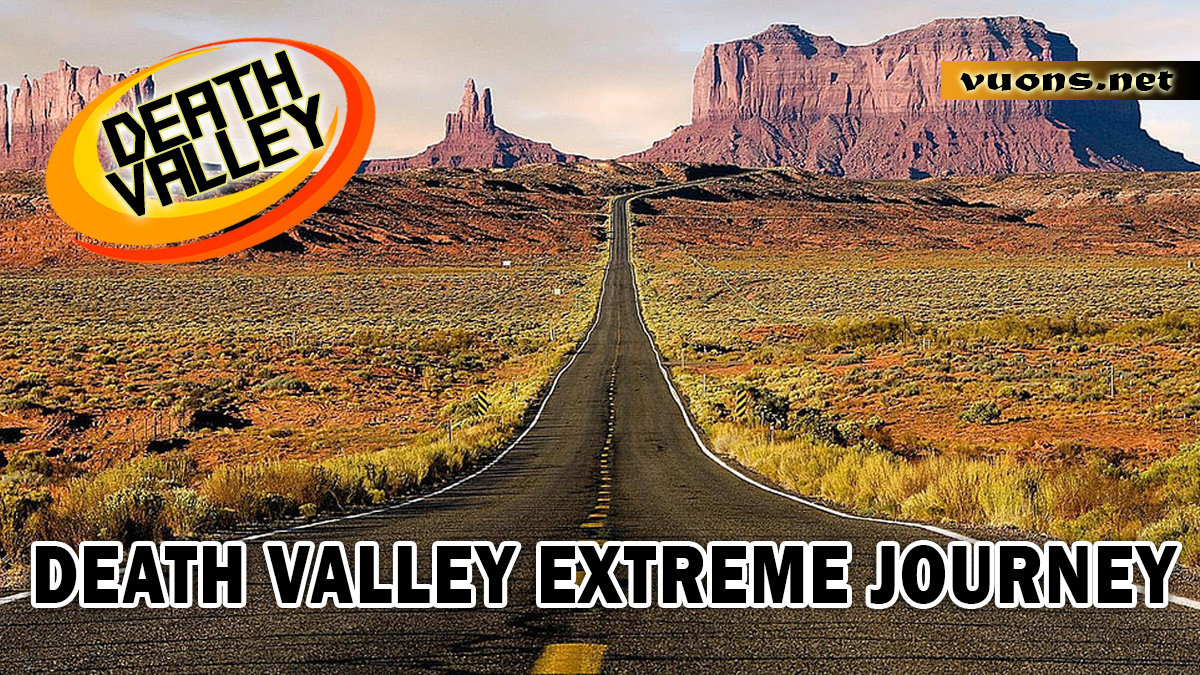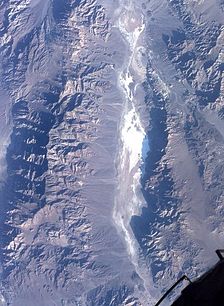Death Valley: Beauty in the Midst of Extremes
History and Geography of Death Valley
Death Valley. a desert valley located east of California and a small part of Nevada, is one of the hottest and driest places on earth. Located within the Mojave Desert, the valley is renowned for its extreme conditions and stunning natural views. The history and geography of Death Valley provide interesting insight into the formation and evolution of this region.
Geologically Death Valley was formed about three million years ago due to tectonic activity which caused the earth’s crust to stretch and crack. This process creates a series of valleys and mountains stretching from southwest to northeast. The valley is below sea level, with its lowest point, Badwater Basin, being approximately 282 feet below sea level, making it the lowest point in North America.
The first European exploration of Death Valley occurred in the mid-19th century during the California gold rush. In 1849, a group of gold prospectors trying to find a faster route to the gold fields became trapped in this valley, and many of them experienced extreme suffering due to the extreme conditions. The name “Death Valley” itself comes from this tragic experience.
Death Valley’s geography is diverse, including sand dunes, salt flats, dry valleys, and rugged mountains. Death Valley National Park, established in 1933 and expanded in 1994, protects the region and provides visitors the opportunity to explore its extraordinary natural beauty.
Death Valley is a place full of contrasts, from extreme temperatures that can reach more than 130 degrees Fahrenheit (54 degrees Celsius) in summer, to stunning views and diverse flora and fauna that have managed to adapt to this harsh environment. The history and geography of Death Valley provide an insight into how life was able to survive and thrive in one of the most extreme places on the planet.
Geological Uniqueness of Death Valley
Death Valley, located east of California and parts of Nevada, is one of the hottest and driest places on earth. Death Valley’s unique geology makes it an interesting scientific research area as well as a stunning tourist destination.
Geologically, Death Valley was formed about three million years ago due to tectonic activity which caused the earth’s crust to stretch and crack. This process creates a series of valleys and mountains stretching from southwest to northeast. One of Death Valley’s most notable geological features is Badwater Basin, which sits 282 feet below sea level, making it the lowest point in North America.
Death Valley is also famous for the geological phenomenon called “sailing stones”. These stones appear to move on their own across the flat surface of the salt flats, leaving long trails behind them. This phenomenon is caused by a combination of strong winds and a thin layer of ice that forms at night, which allows these rocks to move as the ice melts.
The valley also has diverse geological formations, including spectacular sand dunes, such as the Eureka Dunes which are one of the highest sand dunes in North America. Apart from that, there is also Ubehebe Crater, a volcanic crater formed by hydrovolcanic eruptions around 2,000 years ago. The crater is about half a mile in diameter and nearly 800 feet deep.
Death Valley’s unique geology also includes structures such as the Artist’s Palette, an area of colorful hills caused by the oxidation of various minerals. These striking colors provide a stunning view and are a major attraction for photographers and visitors.
Death Valley’s unique geology provides insight into the natural processes that shaped this extreme landscape. With its stunning views and rare geological phenomena, Death Valley continues to fascinate scientists and tourists from all over the world.
Climate Extremes and the Challenges of Survival
Death Valley is a desert valley located in eastern California and a small part of Nevada, known as one of the hottest and driest places on earth. Climate Extremes and the Challenges of Survival in Death Valley provide an insight into how life can adapt to extremely harsh conditions.
Temperatures in Death Valley can reach over 130 degrees Fahrenheit (54 degrees Celsius) in the summer, making it one of the hottest places on earth. Nighttime temperatures rarely fall below 85 degrees Fahrenheit (29 degrees Celsius). Rainfall in Death Valley is very low, averaging only about 2 inches per year, creating a dry and barren environment.
These extreme conditions are challenging for all forms of life. Plants in Death Valley have had to adapt to survive with very limited water. Many plants have very deep roots to find water, while others have small leaves or no leaves at all to reduce water loss through evaporation. One example of a plant that has managed to survive in this environment is the cactus, which is able to store large amounts of water to deal with long periods of drought.
Humans living in Death Valley, including the indigenous Timbisha Shoshone tribe, have developed special ways to survive in this environment. They understand the existing natural resources well and utilize them effectively. The use of desert plants, hunting and gathering techniques, and habitat adaptations that protect against extreme heat are some of the strategies they used.
The extreme climate and challenges of survival in Death Valley demonstrate the extraordinary ability of life to adapt to harsh environments. Despite the extremely challenging conditions, various life forms have managed to find ways to survive and even thrive in one of the most extreme places on earth.
Stories and Myths about Death Valley
Death Valley, a desert valley in eastern California and parts of Nevada, is one of the most extreme places on Earth. Apart from being famous for its harsh climate, Death Valley is also filled with various stories and myths that add to the mysterious aura of this place. Stories and Myths about Death Valley reflect humanity’s efforts to understand and explain this extraordinary natural phenomenon.
One of the most famous myths is about lost treasure. Many stories circulate about explorers and miners who got lost in this valley while searching for gold or other hidden riches. One of the most famous stories is that of the Lost Gunsight Mine, which was supposedly discovered by early explorers but later lost, sparking a relentless search by miners for years.
Ghost stories also haunt Death Valley. One popular legend is that of the “Lady in White,” a woman who allegedly wandered around Scotty’s Castle, a historic building in the valley. According to the story, she is the ghost of a woman who died tragically and now wanders around, looking for peace in the world after death.
Another interesting story is that of the native Timbisha Shoshone tribe, who have local legends explaining the origins of several geographic features in Death Valley. One of their stories describes how extreme heat and drought were created by angry spirit creatures, providing insight into how the native people understood their harsh environment.
Stories and myths about Death Valley not only add to the attraction of this place but also reflect man’s awe and respect for the forces of nature. These stories bring the history and culture of this region to life, making it more than just an extreme landscape, but also a storehouse of stories and legends that live on in the minds of those who visit.




